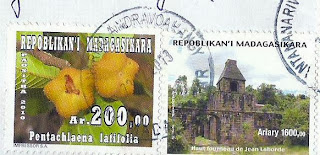NAIROBI
Kenya's capital is a thriving cosmopolitan city and the commercial and communications centre of East Africa. Often called 'The Green City in the Sun' has wide tree-fined avenues and tall modern buildings, the skyline being dominated by the towering Kenyatta International Conference Centre, the city lies 5,500 feet above sea level and 160 kilometres South of the Equator.
Sent by Simon from Nairobi, Kenya.
Nairobi /naɪˈroʊbi/ is the capital and largest city of Kenya. The city and its surrounding area also form the Nairobi County. The name "Nairobi" comes from the Maasai phrase Enkare Nyrobi, which translates to "cold water". The phrase is also the Maasai name of the Nairobi river, which in turn lent its name to the city. However, it is popularly known as the "Green City in the Sun" and is surrounded by several expanding villa suburbs. Inhabitants of Nairobi are referred to as Nairobians, and the city is governed by the County Government of Nairobi, whose current governor is Evans Kidero.
Founded by the British in 1899 as a simple rail depot on the railway linking Mombasa to Uganda, the town quickly grew to become the capital of British East Africa in 1907, and eventually the capital of the newly independent Kenyan republic in 1963. During Kenya's colonial period, the city became a centre for the colony's coffee, tea and sisal industry. Nairobi city is also a county in itself. The city lies on the Nairobi River, in the south of the nation and has an elevation of 1795 m above sea-level.
Nairobi is the most populous city in East Africa, with a current estimated population of about 3 million. According to the 2009 Census, in the administrative area of Nairobi, 3,138,295 inhabitants lived within 696 km2 (269 sq mi). Nairobi is currently the 14th largest city in Africa, including the population of its suburbs. (read further)

































